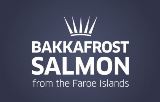Bakkafrost chief speaks of landmark year

BAKKAFROST chairman Runi M. Hansen has described 2017 as a landmark year in the Faroese salmon farming company\’s history.
He said in his annual statement to shareholders and employees that the highlight was the merging of seven factories on the Faroe Islands into one modern facility.
But it was also a satisfactory year in financial terms with an operating EBIT (earnings before interest and tax) or gross profit of 1,378 million Danish kroners (DKK) up from DKK 1,165 million on 2016.
‘All of Bakkafrost’s investments have the same goal – to prepare the company for the future by reducing the biological risk and making Bakkafrost competitive,’ he said.
‘We, who are responsible for the company, must endeavour to have an operation as effective and sustainable as possible, while the politicians must aim to set a competitive framework, compared to foreign competition. If one of these objectives fails, we and the community will lose.’
His report continues: ‘With our unique product and our sales and marketing effort, we have achieved premium prices.
‘By building the new [VAP] factory in Glyvrar, we wanted to go even longer in value creation, and the plan is to use the old factory at Glyvrar for product development and research.
‘A new salmon fishmeal and oil factory will start operation in Havsbrún in 2018. By producing salmon fishmeal and oil from guts, skin and offcuts of salmon into more valuable products, Bakkafrost pursues more value creation.
‘The plan is to certify this production as human grade. By this, all parts of the salmon will be used and sold as healthy food. It is most important for us as a company to continuously develop in all areas. Bakkafrost has probably the longest value chain in the salmon farming business.’
Bakkafrost\’s board of management, led by CEO Regin Jacobsen, said the overall performance in 2017 was strong and satisfying.
The salmon market continued with record high salmon prices in 2016 and into 2017. As expected, the salmon price decreased in the second half of 2017, especially during the last quarter of 2017, as the supply of salmon began to increase again.
The VAP (value added processing) segment moved its operation into the new facility at Glyvrar in the beginning of 2017 and experienced start-up issues, but the operation had since improved. As in 2016, the VAP segment had a loss last year because of high salmon spot prices.
The VAP segment sells on long-term contracts and typically the prices in the long-term contracts have a time lag, compared with the spot price for fresh salmon.
The VAP segment had a profit for the last quarter of 2017. The farming segment experienced high margins, and the FOF segment had a very good year in 2017.

